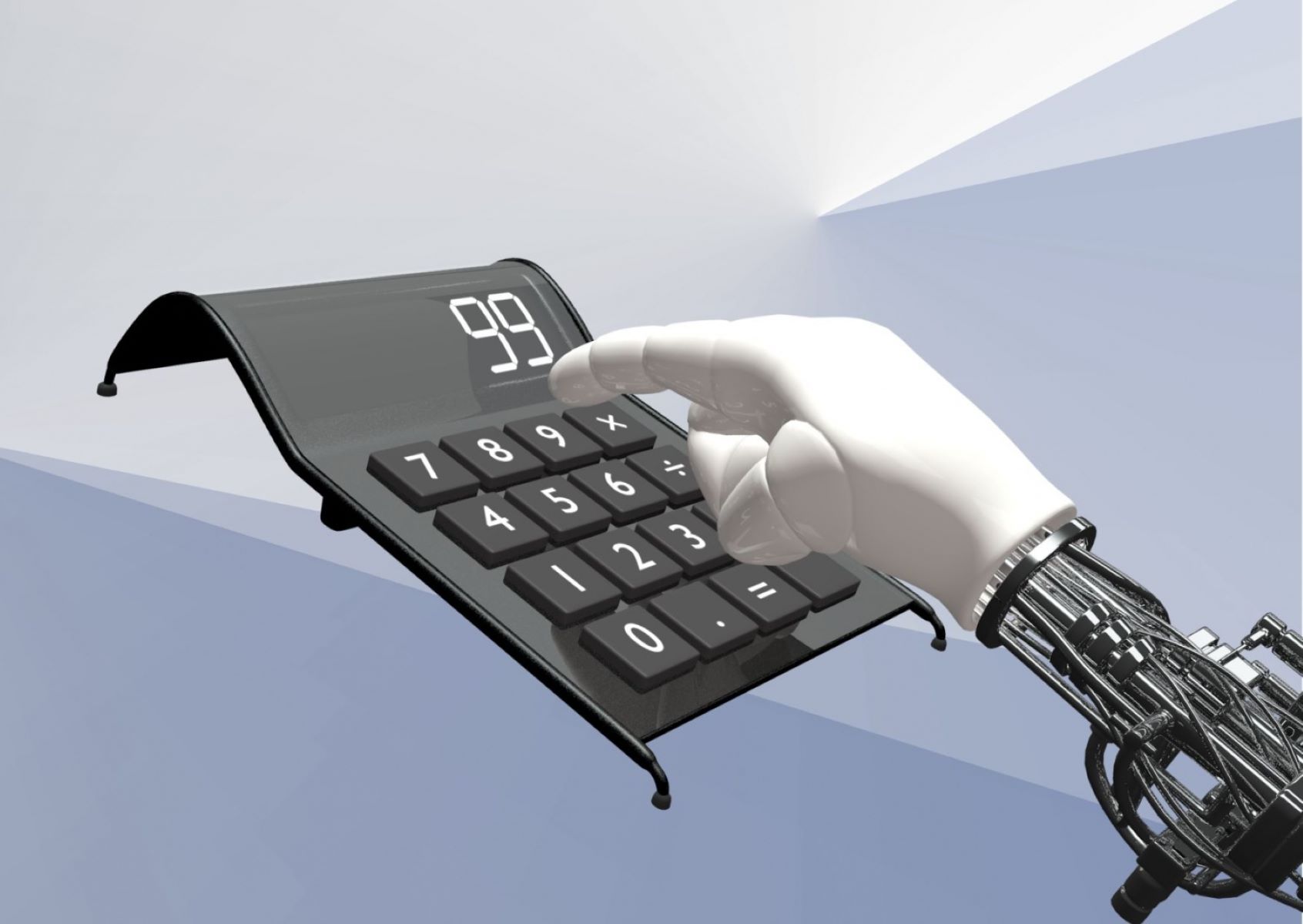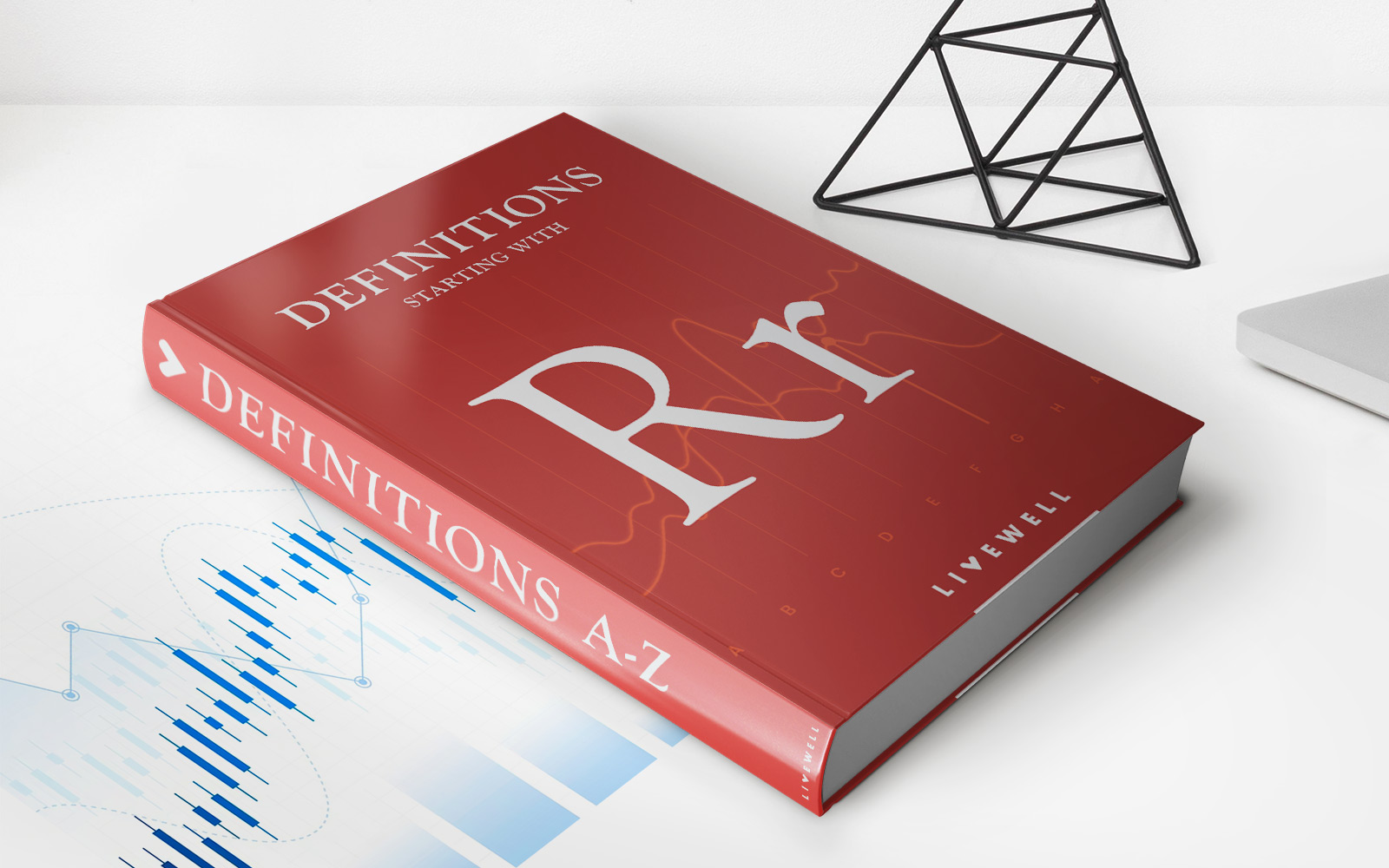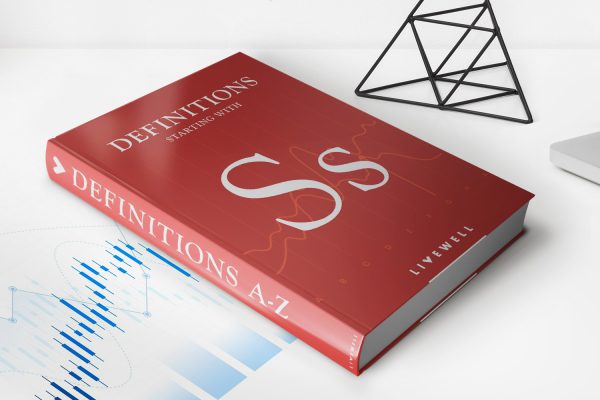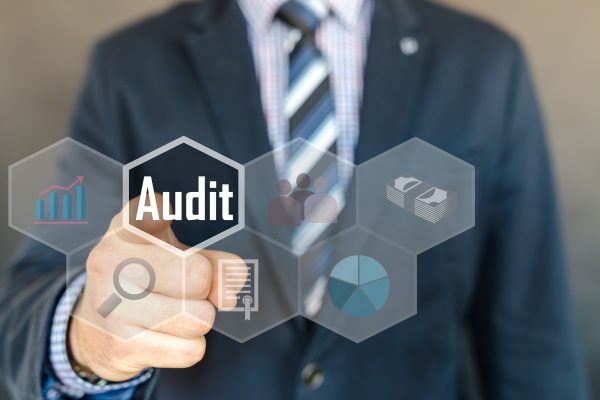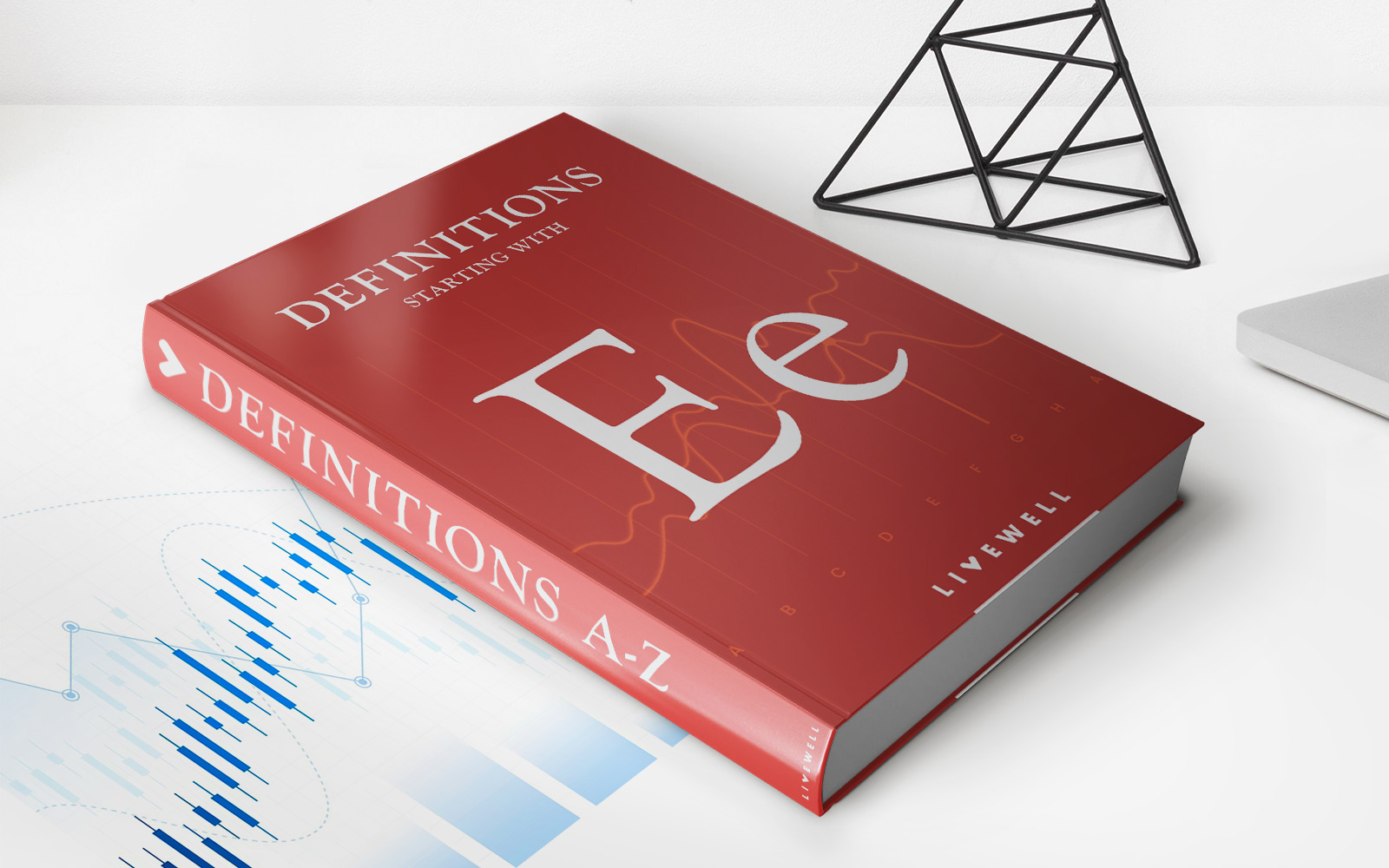Home>Finance>How Robotic Process Automation Is Transforming Accounting And Auditing.
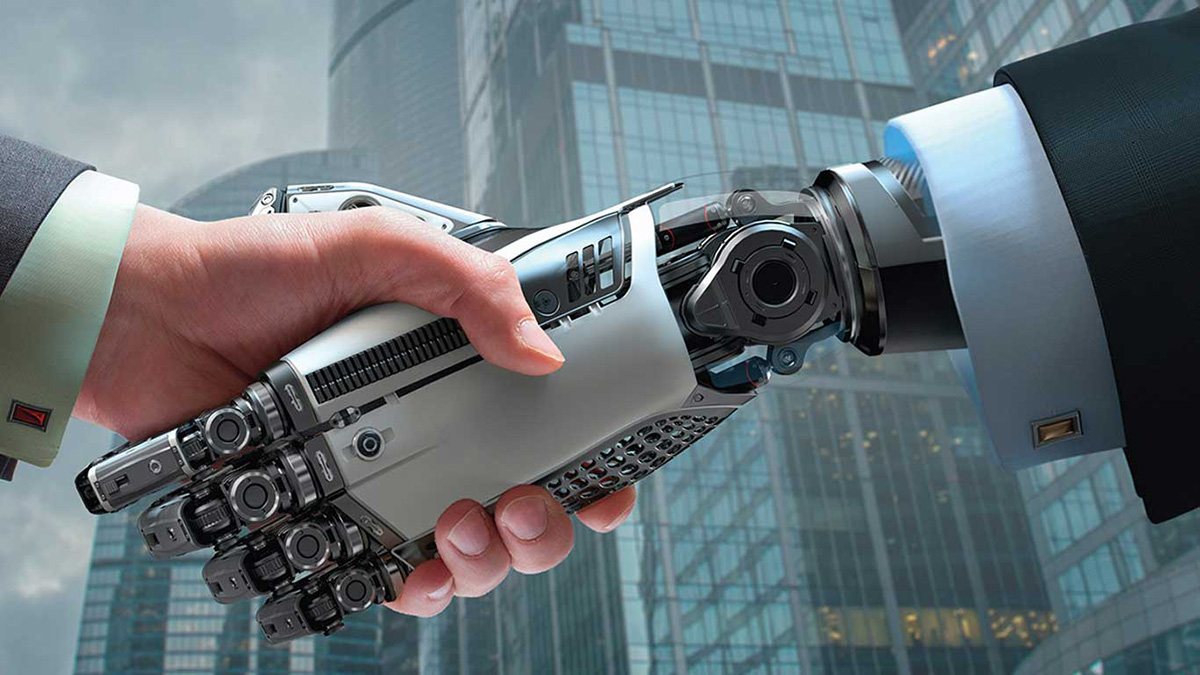

Finance
How Robotic Process Automation Is Transforming Accounting And Auditing.
Published: December 28, 2023
Discover how finance is being revolutionized by robotic process automation in accounting and auditing, delivering accurate and efficient results.
(Many of the links in this article redirect to a specific reviewed product. Your purchase of these products through affiliate links helps to generate commission for LiveWell, at no extra cost. Learn more)
Table of Contents
- Introduction
- Definition of Robotic Process Automation (RPA)
- Benefits of RPA in Accounting and Auditing
- Automation of Routine Tasks in Accounting
- Streamlining of Audit Processes with RPA
- Data Accuracy and Risk Management with RPA
- Enhancing Efficiency and Productivity in Accounting and Auditing
- Integration of RPA with Existing Systems
- Challenges and Considerations for Adoption of RPA in Accounting
- Future Outlook for RPA in Accounting and Auditing
- Conclusion
Introduction
In today’s fast-paced and technology-driven world, businesses are constantly seeking ways to optimize their processes and improve overall efficiency. This quest for efficiency has led to the rise of Robotic Process Automation (RPA) in various sectors, including accounting and auditing.
RPA involves the use of software robots or “bots” to automate repetitive and rule-based tasks, typically performed by humans. These bots are programmed to follow predefined instructions and interact with various software applications to complete tasks with speed and accuracy.
The adoption of RPA in accounting and auditing has gained significant traction in recent years. It offers numerous benefits, such as increased efficiency, improved data accuracy, enhanced risk management, and streamlined audit processes. The integration of RPA with existing accounting systems also enables seamless data exchange and reduces manual efforts.
This article explores how RPA is transforming the field of accounting and auditing, revolutionizing the way professionals in these industries work and ultimately delivering value to businesses.
Definition of Robotic Process Automation (RPA)
Robotic Process Automation (RPA) is a technology that utilizes software robots, also known as bots, to automate repetitive and rule-based tasks. These bots are programmed to mimic human actions and interact with various software applications, systems, and databases to perform tasks with a high level of accuracy and efficiency.
RPA operates on structured data and follows clearly defined rules and instructions. It can handle tasks such as data entry, data validation, report generation, invoice processing, reconciliations, and much more. The software robots replicate human interactions with applications and systems by utilizing user interfaces, extracting data, manipulating it, and performing the required actions or transactions.
RPA is different from traditional robotic automation as it does not involve physical robots. Instead, it focuses on automating digital processes by leveraging software robots that can work alongside human employees in a complementary and collaborative manner.
One of the key attributes of RPA is its ability to work across multiple applications and systems, allowing for seamless integration and data exchange. Bots can interact with different software platforms, including enterprise resource planning (ERP) systems, customer relationship management (CRM) software, accounting software, and other specialized tools used in accounting and auditing.
RPA technologies often come equipped with features such as screen scraping, optical character recognition (OCR), and natural language processing (NLP), which enable bots to extract and process data from various sources, including scanned documents, emails, PDFs, and web pages.
Overall, RPA acts as a virtual workforce that can carry out repetitive and time-consuming tasks efficiently, allowing human employees to focus on more strategic and value-added activities.
Benefits of RPA in Accounting and Auditing
The adoption of Robotic Process Automation (RPA) in accounting and auditing offers numerous benefits that can greatly enhance the efficiency and effectiveness of these processes. Let’s explore some of the key advantages of implementing RPA in these fields:
- Increased Efficiency: RPA enables the automation of routine and repetitive tasks, such as data entry, invoice processing, and report generation. By freeing up human resources from these mundane activities, companies can maximize productivity and allocate their employees to more value-added tasks.
- Improved Data Accuracy: Manual data entry is prone to errors, which can have a significant impact on financial statements and audit outcomes. RPA eliminates human error by ensuring accurate data entry and validation. This leads to more reliable financial reporting and audit results.
- Enhanced Risk Management: RPA allows for the implementation of standardized control procedures to ensure compliance with regulatory requirements. Bots can perform periodic checks, identify anomalies, and generate alerts, thereby reducing the risk of fraud or non-compliance.
- Streamlined Audit Processes: RPA enables the automation of audit procedures, such as data extraction, sample selection, and documentation. Bots can gather data from various sources, perform analysis, and generate audit reports, saving significant time and effort for auditors.
- Increased Speed and Accuracy: RPA bots can perform tasks at a much faster pace compared to manual processing. They can process large volumes of data within seconds, ensuring timely completion of accounting activities and audits.
- Improved Transaction Processing: RPA can facilitate seamless integration between different systems and applications. This allows for the automatic transfer of data between systems, eliminating the need for manual data entry and reducing the risk of errors or inconsistencies.
- Cost Savings: By automating repetitive tasks and reducing manual efforts, RPA can lead to significant cost savings for organizations. It eliminates the need for additional workforce hiring and training and allows existing employees to focus on strategic initiatives.
In summary, the benefits of implementing RPA in accounting and auditing include increased efficiency, improved data accuracy, enhanced risk management, streamlined audit processes, faster transaction processing, and cost savings. By leveraging RPA technology, businesses can optimize their financial processes, improve productivity, and achieve better outcomes in accounting and auditing activities.
Automation of Routine Tasks in Accounting
One of the primary advantages of Robotic Process Automation (RPA) in accounting is the automation of routine and repetitive tasks. These tasks often consume a significant amount of time and resources for accounting professionals. However, with RPA, organizations can streamline these processes, improve efficiency, and redirect human efforts towards more strategic activities.
RPA can automate a wide range of routine tasks in accounting, including data entry, invoice processing, bank reconciliations, journal entries, and financial reporting. Let’s explore some of these tasks in more detail:
- Data Entry: Manual data entry can be time-consuming and error-prone. RPA bots can automatically extract data from various sources, such as invoices or receipts, and enter it into the accounting system with high accuracy. This not only saves time but also reduces the risk of data entry errors.
- Invoice Processing: RPA can streamline the end-to-end process of invoice processing, from receipt to payment. Bots can extract relevant information from invoices, match them with purchase orders or contracts, perform validation checks, and initiate payment workflows. This automation reduces the need for manual intervention, improves invoice processing speed, and enhances accuracy.
- Bank Reconciliations: RPA bots can automate the reconciliation of bank statements with financial records. They can compare transaction details, identify discrepancies, and reconcile accounts, eliminating the need for manual matching and reducing errors. This automation speeds up the reconciliation process and provides real-time insights into financial discrepancies.
- Journal Entries: RPA can automate the creation and posting of journal entries based on predefined rules and templates. Bots can extract relevant information from source documents, perform calculations, and generate accurate journal entries. This eliminates the need for manual journal entry preparation, reduces errors, and ensures timely posting.
- Financial Reporting: RPA can assist in automating the compilation of financial reports. Bots can gather data from various sources, perform consolidation, apply required calculations or formatting, and generate reports in the desired format. This automation saves time, improves accuracy, and allows for faster analysis and decision-making.
By automating these routine tasks in accounting, RPA not only improves efficiency and accuracy but also reduces the manual effort required by accounting professionals. This enables them to focus on more value-added activities, such as financial analysis, strategic planning, and decision-making, leading to more insightful and impactful contributions to the organization.
Streamlining of Audit Processes with RPA
Robotic Process Automation (RPA) is revolutionizing the field of auditing by streamlining and optimizing various audit processes. Traditionally, audits involve manual procedures, extensive data analysis, and complex documentation. However, with the adoption of RPA, auditors can automate repetitive tasks, improve accuracy, and focus on more strategic activities. Let’s explore how RPA streamlines audit processes:
- Data Extraction and Analysis: RPA bots can extract data from different sources, such as financial systems, spreadsheets, and databases. They can perform data cleansing, validation, and analysis tasks quickly and accurately. This automation eliminates the need for manual data extraction and manipulation, reducing the risk of errors and allowing auditors to focus on data interpretation and analysis.
- Sample Selection: RPA can assist in the automated selection of samples for audit testing. Bots can randomly select samples from large data sets, ensuring unbiased and objective sampling. This automation improves the efficiency of sample selection and reduces the time and effort required by auditors.
- Automated Testing: RPA enables auditors to automate various testing procedures, such as control testing, transaction testing, and compliance testing. Bots can execute predefined test scripts, perform calculations, and compare results with expected outcomes. This automation speeds up the testing process, ensures consistent execution, and improves accuracy.
- Documentation and Reporting: RPA can automate the documentation and reporting tasks associated with audits. Bots can generate standardized audit workpapers, populate templates, and create audit reports based on predefined formats. This automation reduces the time spent on documentation and improves the consistency and quality of audit reporting.
- Monitoring and Controls: RPA bots can assist in continuous monitoring and control testing by performing routine checks and alerts. They can monitor data in real-time, identify anomalies or deviations, and notify auditors for further investigation. This automation enhances the effectiveness of internal controls and risk management.
By streamlining audit processes with RPA, auditors can save time, improve accuracy, and focus on higher-value tasks. It reduces the manual effort required for data extraction, analysis, testing, documentation, and monitoring, allowing auditors to spend more time on critical thinking, root cause analysis, and providing valuable insights to stakeholders. RPA also enhances the consistency and repeatability of audit procedures, ensuring standardized execution and improving overall audit quality.
Data Accuracy and Risk Management with RPA
Data accuracy and risk management are critical aspects of accounting and auditing. Robotic Process Automation (RPA) plays a significant role in enhancing both of these areas. By automating routine tasks and implementing standardized control procedures, RPA improves data accuracy and strengthens risk management practices. Let’s explore how RPA achieves these benefits:
- Reduction of Human Error: Manual data entry is susceptible to errors, which can have a significant impact on financial reporting and audit outcomes. RPA eliminates the risk of human error by automatically extracting and validating data from various sources. This automation ensures data accuracy and reliability, minimizing the chances of errors in financial statements and audit findings.
- Standardized Control Procedures: RPA allows organizations to implement standardized control procedures across accounting and auditing processes. Bots can perform predefined control checks, verify data integrity, and ensure compliance with regulatory requirements. This automation enhances the effectiveness of internal controls and reduces the risk of fraud, errors, and non-compliance.
- Real-time Monitoring and Alerts: RPA bots can monitor data and transactions in real-time, identifying anomalies or deviations from established rules or thresholds. They can generate alerts and notify relevant stakeholders for immediate action. This proactive risk monitoring and alerts system enable organizations to address potential risks promptly and mitigate any adverse impacts.
- Enhanced Data Validation: RPA can validate data across multiple systems or applications, ensuring consistency and accuracy. Bots can perform data reconciliations, match transactions, and identify discrepancies or inconsistencies. This automation streamlines the data validation process, reduces manual effort, and improves risk management by identifying potential data integrity issues.
- Improved Fraud Detection: RPA can assist organizations in detecting and preventing fraudulent activities. Bots can analyze large volumes of data, identify patterns, and flag suspicious transactions or activities. This automation enhances fraud detection capabilities, enabling auditors and risk management teams to investigate and address potential fraud risks promptly.
- Audit Trail and Documentation: RPA creates an audit trail by logging all activities performed by bots. This audit trail provides a comprehensive and transparent record of all actions, ensuring accountability and compliance. Additionally, RPA automates the generation of audit documentation, ensuring consistency, accuracy, and completeness of audit evidence.
By leveraging RPA for data accuracy and risk management, organizations can minimize errors, strengthen internal controls, and improve overall governance practices. The automation of routine tasks and the implementation of standardized control procedures enhance data accuracy, reliability, and compliance. RPA also enables real-time monitoring, alerts, and fraud detection, enabling timely intervention and risk mitigation. Ultimately, the implementation of RPA in accounting and auditing contributes to a more robust and efficient risk management framework within organizations.
Enhancing Efficiency and Productivity in Accounting and Auditing
Robotic Process Automation (RPA) is a game-changer when it comes to enhancing efficiency and productivity in accounting and auditing. By automating routine and time-consuming tasks, RPA frees up valuable time for accounting and auditing professionals to focus on more strategic and value-added activities. Let’s explore how RPA enhances efficiency and productivity in these fields:
- Automation of Routine Tasks: RPA bots can automate repetitive tasks such as data entry, data validation, and report generation. This automation reduces manual effort and allows accounting and auditing professionals to allocate their time to more critical and analytical tasks that require their expertise.
- Speed and Accuracy: RPA executes tasks with great speed and accuracy. Bots can process large volumes of data in a fraction of the time it would take a human operator. This efficiency improves turnaround time for accounting and auditing processes and eliminates errors that can occur due to manual data entry and calculations.
- Improved Data Accessibility: RPA enables seamless integration and data exchange between different systems and applications. This accessibility to real-time and accurate data eliminates the need for manual data reconciliation and allows for smoother workflow across different teams involved in accounting and auditing processes.
- Efficient Resource Allocation: By automating repetitive tasks, RPA optimizes resource allocation. Accounting and auditing professionals can focus on higher-value activities, such as financial analysis, risk assessment, and strategic decision-making. This targeted allocation of resources increases efficiency and provides organizations with more valuable insights and recommendations.
- Standardization and Consistency: RPA enforces standardization and consistency in accounting and auditing processes. Bots follow predefined rules and procedures, ensuring that tasks are executed consistently every time. This standardization reduces the risk of errors or variations in performing tasks, leading to greater accuracy and reliability in financial reporting and audit outcomes.
- Collaboration between Humans and Bots: RPA facilitates collaboration between humans and bots. Instead of replacing humans, RPA works alongside accounting and auditing professionals, augmenting their capabilities and improving overall productivity. Humans can oversee and manage RPA processes while focusing on tasks that require critical thinking and decision-making.
- Scalability: RPA allows for easy scalability in accounting and auditing processes. As the volume of data and tasks grows, RPA can be quickly scaled up to handle the increased workload. This scalability ensures that efficiency and productivity are maintained even as organizations experience growth or changes in their operations.
By harnessing the power of RPA, organizations can significantly enhance efficiency and productivity in accounting and auditing. Automation of routine tasks, improved speed and accuracy, efficient resource allocation, and the facilitation of collaboration between humans and bots enable professionals in these fields to focus on higher-value tasks, deliver better outcomes, and drive strategic decision-making.
Integration of RPA with Existing Systems
The successful integration of Robotic Process Automation (RPA) with existing systems is crucial for maximizing its benefits in accounting and auditing. RPA can be seamlessly integrated with various software applications and systems, enabling efficient data exchange and streamlined workflows. Let’s explore the key aspects of integrating RPA with existing systems:
- Compatibility: RPA technology is compatible with a wide range of software applications commonly used in accounting and auditing, such as Enterprise Resource Planning (ERP) systems, Customer Relationship Management (CRM) software, and specialized accounting tools. Bots can interact with these systems through their user interfaces or application programming interfaces (APIs).
- Data Extraction and Integration: RPA bots can extract data from multiple sources, including spreadsheets, databases, emails, and scanned documents. They can then integrate this data with existing accounting systems, ensuring a smooth flow of information. This automation eliminates the need for manual data entry and improves data accuracy and reliability.
- Bi-Directional Data Exchange: RPA allows for bi-directional data exchange between different systems. Bots can retrieve data from one system, perform required calculations or transformations, and update or upload the processed data into another system. This integration ensures consistency and reduces manual effort in data reconciliation or duplication.
- Application Programming Interfaces (APIs): RPA can leverage APIs to seamlessly interact with existing systems. APIs enable bots to retrieve data, perform actions, and receive responses from software applications in a structured manner. This integration method ensures real-time data synchronization and eliminates the need for manual data transfer or import/export processes.
- Automation of Workflows: RPA can automate end-to-end workflows by integrating with existing systems. Bots can trigger actions or processes in one system based on events or data inputs from another system. This automation streamlines the flow of information and reduces manual intervention, leading to improved efficiency and productivity.
- Security and Compliance: Integration of RPA with existing systems requires careful consideration of security and compliance requirements. Authentication mechanisms, data encryption, and access controls must be implemented to ensure the confidentiality and integrity of data. Additionally, compliance with data protection regulations, such as the General Data Protection Regulation (GDPR), should be considered during integration.
- System Monitoring and Error Handling: RPA should be integrated with system monitoring tools to track the performance and health of integrated systems. This monitoring allows for early detection of errors or issues, such as system downtimes or data synchronization problems. Proper error handling mechanisms should also be implemented to handle exceptions and ensure the continuity of operations.
The integration of RPA with existing systems enables organizations to leverage the power of automation while preserving their investments in software applications and systems. This integration allows for seamless data exchange, improved data accuracy, streamlined workflows, and real-time synchronization. Ultimately, it enhances efficiency, productivity, and decision-making capabilities within accounting and auditing processes.
Challenges and Considerations for Adoption of RPA in Accounting
While Robotic Process Automation (RPA) offers numerous benefits in accounting, its adoption is not without challenges. It is important for organizations to understand and address these challenges to ensure a smooth and successful implementation. Let’s explore some of the key challenges and considerations for adopting RPA in accounting:
- Process Selection: Identifying the right processes to automate is a critical consideration. Not all processes are suitable for automation, and organizations should carefully assess the complexity, volume, and potential impact of each process before implementing RPA. Starting with simpler and well-defined processes can help build confidence and momentum for broader adoption.
- Data Quality and Standardization: RPA relies on accurate and standardized data for optimal performance. Organizations should ensure that data sources and formats are consistent, well-structured, and free from anomalies. Data quality issues can lead to errors or delays in RPA processes, making it essential to invest in data cleansing and validation efforts before automation.
- Change Management: Introducing RPA requires managing the change among employees. Some individuals may be resistant or fearful of automation, fearing job displacement. Effective change management strategies should be implemented to communicate the benefits of RPA and provide training and support to employees. Involving employees in the implementation process can help alleviate concerns and ensure their buy-in.
- Integration Complexity: Integrating RPA with existing systems can be complex. Compatibility issues, varying data formats, and security concerns can arise during integration. Organizations need to carefully plan and coordinate integration efforts, involving IT and business stakeholders, to ensure seamless data exchange and system compatibility.
- Governance and Control: RPA introduces new risks and challenges in terms of governance and control. Organizations should establish proper controls, access management, and audit trails to ensure the appropriate use and management of RPA bots. Continuous monitoring and periodic risk assessments should be in place to mitigate potential risks and ensure compliance with regulations.
- Maintenance and Scalability: RPA requires regular maintenance and monitoring to ensure smooth operation. Organizations need to allocate resources for the maintenance and support of RPA bots, including handling exceptions, updates, and configuration changes. Additionally, scalability considerations should be taken into account to ensure the RPA implementation can accommodate future growth and changes in business processes.
- Cost-Benefit Analysis: Conducting a thorough cost-benefit analysis is crucial before adopting RPA. While RPA can offer significant benefits, organizations should assess the investment required, including software licenses, implementation costs, training, and ongoing maintenance. The projected cost savings and productivity gains should outweigh the initial investment for a successful adoption.
Addressing these challenges and considerations is essential for a successful adoption of RPA in accounting. By carefully evaluating processes, ensuring data quality and standardization, managing change effectively, addressing integration complexities, establishing proper governance and control measures, planning for maintenance and scalability, and conducting a comprehensive cost-benefit analysis, organizations can reap the full benefits of RPA and drive positive transformation in their accounting operations.
Future Outlook for RPA in Accounting and Auditing
The future outlook for Robotic Process Automation (RPA) in accounting and auditing is promising, with significant growth and advancements anticipated. As technology continues to evolve, RPA is expected to play an increasingly critical role in transforming these fields. Here are some key trends and developments to consider when looking at the future of RPA in accounting and auditing:
- Expanded Automation Capabilities: RPA is likely to advance in its capabilities, allowing for more complex and cognitive automation. Artificial Intelligence (AI) technologies, such as machine learning and natural language processing, can be integrated with RPA, enabling bots to perform advanced tasks, including data analysis, pattern recognition, and decision-making. This integration will enhance the ability of RPA to handle complex accounting and auditing processes.
- Intelligent Automation: The integration of AI with RPA will give rise to intelligent automation, which combines the cognitive abilities of AI with the efficiency and accuracy of RPA. Intelligent automation will enable bots to learn from data, reason, and make informed decisions, transforming accounting and auditing processes by automating higher-level tasks that previously required human intervention. This shift will allow professionals to focus on more strategic and value-added activities.
- Process Mining: Process mining, a technology that analyzes event logs to reconstruct real-time process flow, can be integrated with RPA. By combining process mining with RPA, organizations can gain insights into process bottlenecks, inefficiencies, and improvement opportunities. This integration will enable continuous process optimization and further enhance the efficiency of accounting and auditing activities.
- Blockchain Integration: The integration of RPA with blockchain technology has immense potential in the field of accounting and auditing. Blockchain provides a decentralized and secure system for recording and verifying transactions. By combining RPA with blockchain, organizations can automate transaction validation and reconciliation by leveraging the distributed ledger capabilities of blockchain. This integration enhances data integrity, eliminates the need for manual reconciliation, and improves the transparency and reliability of financial information.
- Enhanced Reporting and Analytics: RPA can enable more advanced reporting and analytics capabilities in accounting and auditing. Bots can automatically generate customized reports, perform predictive analysis, and identify trends or anomalies in financial data. This automation will allow for faster and more accurate financial reporting, as well as provide valuable insights for decision-making.
- Collaboration and Co-bot Integration: Collaboration between humans and bots, known as co-bot integration, will become more prevalent. Organizations will continue to leverage the strengths of both humans and bots, with humans providing domain expertise and critical thinking while bots handle repetitive and rule-based tasks. Co-bot integration will increase productivity, efficiency, and the overall quality of accounting and auditing processes.
- Regulatory Compliance and Ethical Considerations: As RPA continues to grow in accounting and auditing, regulatory bodies may introduce guidelines and regulations specific to RPA implementation. Organizations will need to ensure compliance with these regulations and address ethical considerations, such as privacy, security, and responsible use of data. Proactive measures will be essential in maintaining trust and ensuring ethical practices in RPA adoption.
Overall, the future of RPA in accounting and auditing holds tremendous potential for automation, efficiency, and innovation. The integration of AI technologies, intelligent automation, process mining, blockchain integration, enhanced reporting and analytics, collaborative co-bot integration, and adherence to regulatory compliance will shape the future landscape. By embracing these advancements, organizations can unlock new opportunities, enhance productivity, and drive significant value in their accounting and auditing processes.
Conclusion
Robotic Process Automation (RPA) is revolutionizing the fields of accounting and auditing, bringing increased efficiency, improved accuracy, and streamlined processes. By automating routine tasks, such as data entry, invoice processing, and report generation, RPA allows accounting and auditing professionals to focus on more strategic activities that require their expertise.
RPA enhances data accuracy and risk management by reducing human errors, implementing standardized control procedures, and enabling real-time monitoring and alerts. This automation ensures reliable financial reporting, compliance with regulations, and proactive risk mitigation.
The integration of RPA with existing systems facilitates seamless data exchange and streamlines workflows. Bots can extract and integrate data from various sources, ensuring data integrity and consistency. By leveraging APIs and automation of workflows, organizations can achieve faster processing times, improved data accessibility, and efficient resource allocation.
Although there are challenges and considerations, such as process selection, data quality, change management, integration complexity, governance, maintenance, scalability, and cost-benefit analysis, these can be addressed with proper planning and support.
The future outlook for RPA in accounting and auditing is promising, with the potential for expanded automation capabilities, intelligent automation with AI integration, process mining, blockchain integration, enhanced reporting and analytics, collaborative co-bot integration, and regulatory compliance. These advancements will further elevate the benefits of RPA, enhancing productivity, decision-making, and overall value in accounting and auditing processes.
In conclusion, RPA is a transformative technology that offers immense potential for improving efficiency, accuracy, and risk management in accounting and auditing. By embracing RPA and addressing the associated challenges, organizations can drive positive transformations, optimize their operations, and deliver superior outcomes in the dynamic world of finance.

